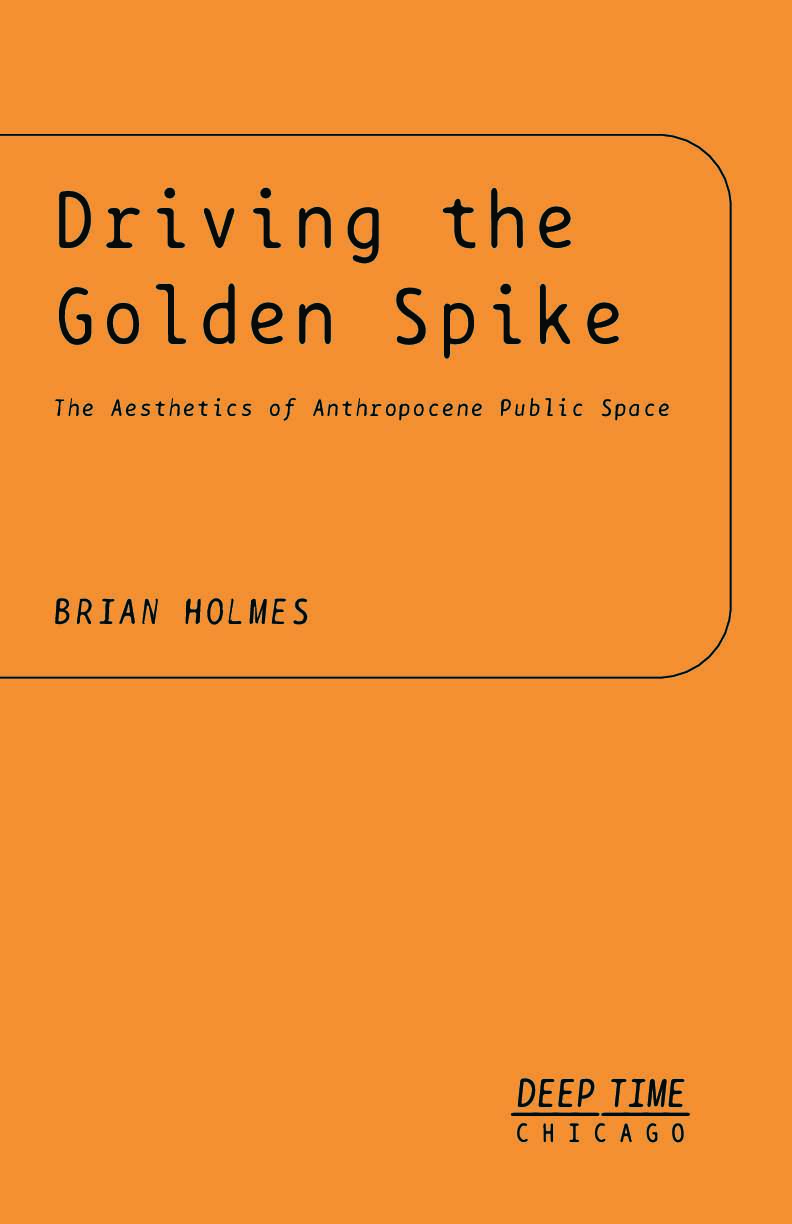Driving the Golden Spike—The Aesthetics of Anthropocene Public Space
In Driving the Golden Spike, the reader joins Brian Holmes as a front-seat-passenger for a meditation on the past and present of the city of Chicago. The micro-publication looks at the metropolis as a site of origin for materials, particles, and social relations that define the new geological epoch of the Anthropocene. Part of the Deep Time Chicago pamphlet series.


Brian Holmes, "Driving the Golden Spike. The Aesthetics of Anthropocene Public Space," Deep Time Chicago Pamphlet Series, 2016
Download (24 Pages)The idea came to me, ironically, while driving around Chicago. It was high summer; I was on the city’s shattered West Side. The urban grid slid by outside the window, residential vernacular on its third or fourth recycle, parched and decayed, with a kind of lost and disjointed vibrancy. Eyes on the traffic, my mind rolled back over the city’s history: its can als and granaries and skyscrapers, its formidable industrial century since the arrival of the railroads in the 1850s, its suburban sprawl after the Great Fire of 1873, its postmodern decline made irreversible by the 1960s revolts and the capital flight that followed. Through it all, the university and financial sectors continued their endless rise. There is a profound violence to this place, but also a deep sense of regularity. Chicago is the race-riot city that turns civil strife into social norms, and splits atoms while abstracting material production into mathematical derivatives. Can you still experiment in a place that has successively been the transport hub, the stockyard, the workshop, the vitrine, the boxing-ring, and quite literally the laboratory of modernism? And what could this ideal of experimentation mean for our future, when its Promethean pasts have reappeared before our eyes as the new geological layer of the Anthropocene?
Extract from Brian Holmes, “Driving the Golden Spike. The Aesthetics of Anthropocene Public Space,” Deep Time Chicago Pamphlet Series, 2016.
